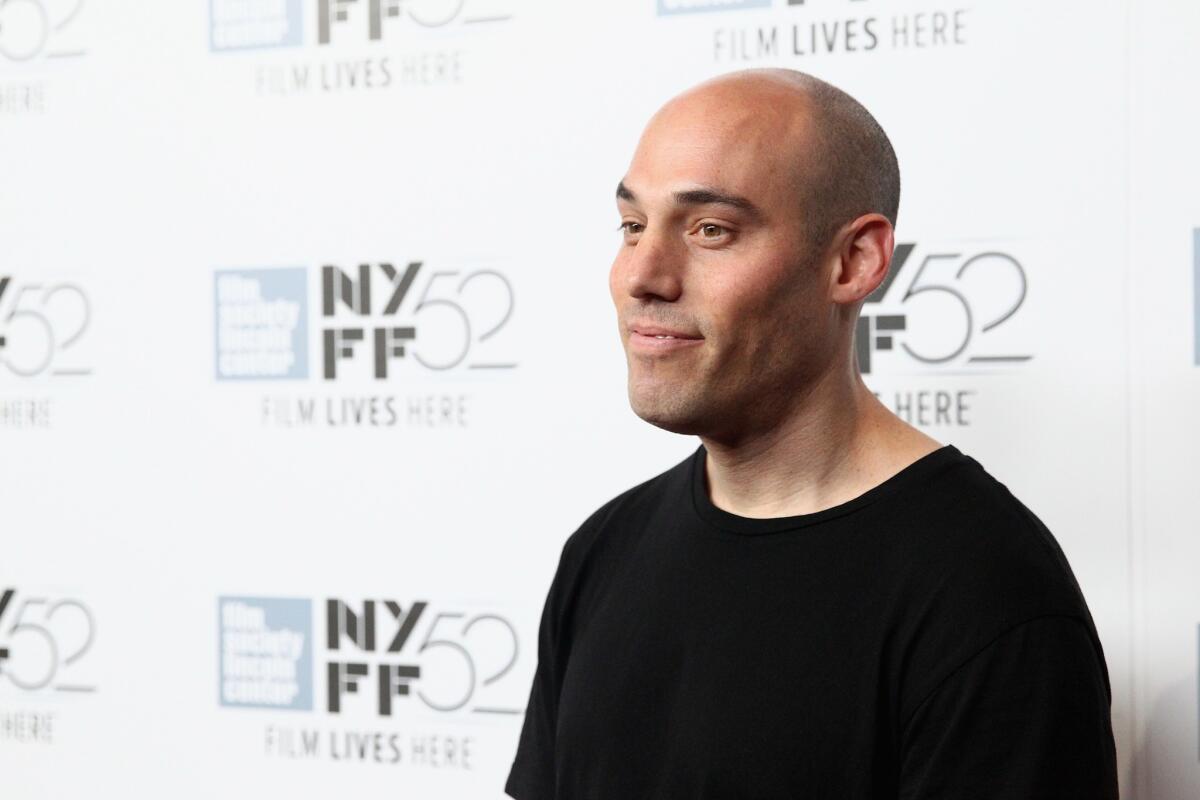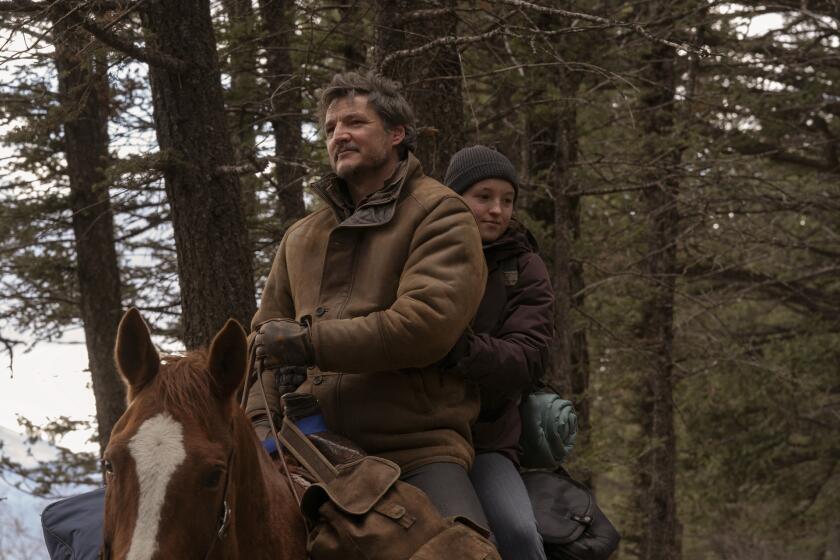NYFF 2014: Revisiting Indonesian acts of killing in ‘Look of Silence’

- Share via
Reporting from New York — In 2012, Joshua Oppenheimer jolted the nonfiction film world with “The Act of Killing,” a fly-on-the-wall account of the perpetrators of the 1965 Indonesian genocide as they stage re-enactments of their horrific crimes. The MacArthur Foundation committee shared the film community’s admiration—a few weeks ago Oppenheimer was given a so-called genius grant, joining a small group of filmmakers who’ve ever been so honored.
“Act of Killing,” which was nominated for the documentary Oscar, was the result of a decade of work in which Oppenheimer embedded himself with the local population in the island nation, speaking the language and documenting them from within.
Just two years later, Oppenheimer returns with “The Look of Silence,” a new film about the period a half-century ago when, after a military coup, an estimated 1 million people with trumped-up “Communist” ties were ripped from their homes by proxies of the new leaders and gruesomely murdered. Many more were sent to concentrations camps. This time, Oppenheimer tells that story from the point of view of victims—not only allowing their experience to emerge but capturing the survivors as they confront the very people who murdered their loved ones.
Far from a B-side addendum to the original, “The Look of Silence” is a wholly conceived, self-contained work with emotional and moral firepower all its own. Oppenheimer intended to make two films from the outset; in fact, a scene in this film that shows perpetrators boasting of the violence was actually the starting point for both movies.
“Silence” is playing a number of high-profile festivals on this season’s circuit ahead of its release by Drafthouse Films next summer, and this week it made its official U.S. premiere at the New York Film Festival. The movie left such an impression on the audience at a screening Wednesday — eerily, the 50th anniversary, to the day, of the start of the purge — that the post-screening Q&A with Oppenheimer went on for nearly an hour, and even after it was called, filmgoers continued to crowd the director in the hall, wanting to engage.
The film follows one family that is still coming to terms with what happened. It looks particularly at Adi, 44, an optician who was born several years after the event--a kind of gift from God, as his very elderly mother puts it--after his brother Ramli was dragged from the family’s home and tortured and killed. Adi is trying to raise a family of his own now, but finds his son being taught propaganda that glorifies the very acts that took away his family.
A soft-spoken but firm man, Adi sets out to visit the homes of those who oversaw or committed the crimes that took away his brother—many are older men now but still alive--asking thoughtful but provocative questions that gives them time to respond but never lets them off the hook. He is, at once, both a sympathetic hero and our angry surrogate.
If the style of the movie is a little more traditional than “Killing”—Oppenheimer can be heard asking questions of the perpetrators too—the result is no less stunning, an encounter with the banality of evil in the most visceral way. Watching survivors come to terms with their pain is hard enough; watching them as they seek answers from those who inflicted it is riveting, disturbing and eye-opening.
“‘The Act of Killing’ is what happens when killers win and are able to create a victor’s history to justify their actions. What does it do to the people who perpetrated the killing? What does it do to the community?” Oppenheimer said at the Q&A. This film, he said, is “about the present-day atrocities. What does it mean for survivors to continue to live in the shadow of men who killed their relatives?”
Oppenheimer has said the situation is akin in many ways to Nazi Germany—only with the added perverse twist that the Nazis won, because the regime that carried out the killing remained in power. But even that stirring comparison, he points out, doesn’t fully do justice to what happened in Sumatra, because not only do the victims still live in fear of the government but they live among their oppressors. These people are their neighbors and teachers. They rarely acknowledge what they did—and when they do it’s considered heroic. In fact, Indonesian society as a whole has only very recently begun talking about the genocide as anything other than brave.
The film contains numerous examples of this, including many disturbing conversations, in which the perpetrators matter of factly say they had to drink the victims’ blood right out of their throats lest they themselves “would go crazy,” one of numerous myths clearly perpetuated by the more religious-minded government to justify the killings.
Slightly enlightened perpetrators lash put at Adi and Oppenheimer, and at least from them there’s a faint notion of recognition, though apology is far from anyone’s mind; the closest Adi comes is with a woman of about his age who extends an apology on behalf of her father, who seems otherwise unremorseful. Adi says at one point to this mother that remorse is all he wants from the killers, because that will allow for forgiveness, and some ability to move on co-existing with these people. (The title is based on scenes featuring Adi watching Oppenheimer’s footage of the perpetrators with a gaze that’s horrified but also on a futile quest to understand.)
“The first film was a flamboyant film, more of a fever dream, and this was something different,” Oppenheimer said in an interview. “It’s finding the cinematic language to express silence.”
Still, he sees the two movies on a continuum, particularly in Indonesia. “The first film was a bomb that could create the space into which this film might go,” he said. “You couldn’t have this film without that one because before ‘The Act of Killing’ there was no model to talk about truth and reconciliation.”
So taboo is the subject there that Oppenheimer and his crew had packed bags waiting in case they needed to flee at any moment. The police were called several times by the perpetrators during the shoot. It is too dangerous, after more than a decade of working and filming these stories, for Oppenheimer to return to Indonesia (he lives in Denmark) and Adi and his family have been relocated to a more supportive community in Indonesia where the past and the threats don’t hover. As with “Killing,” dozens of people in the credits—including heavyweights like line producers—are listed as “Anonymous.”
Oppenheimer has been on a global tour with his new film, premiering it at festivals—on Thursday morning he chatted en route to the airport, headed to the Busan Film Festival. He said the process has changed him, become as much of a journey for him as the films are for the audience. He can’t imagine what he’ll do next. It might be hard for viewers to think of what that would be as well. There’s a lifetime of truth and morality, after all, already contained in this work.
More to Read
From the Oscars to the Emmys.
Get the Envelope newsletter for exclusive awards season coverage, behind-the-scenes stories from the Envelope podcast and columnist Glenn Whipp’s must-read analysis.
You may occasionally receive promotional content from the Los Angeles Times.









